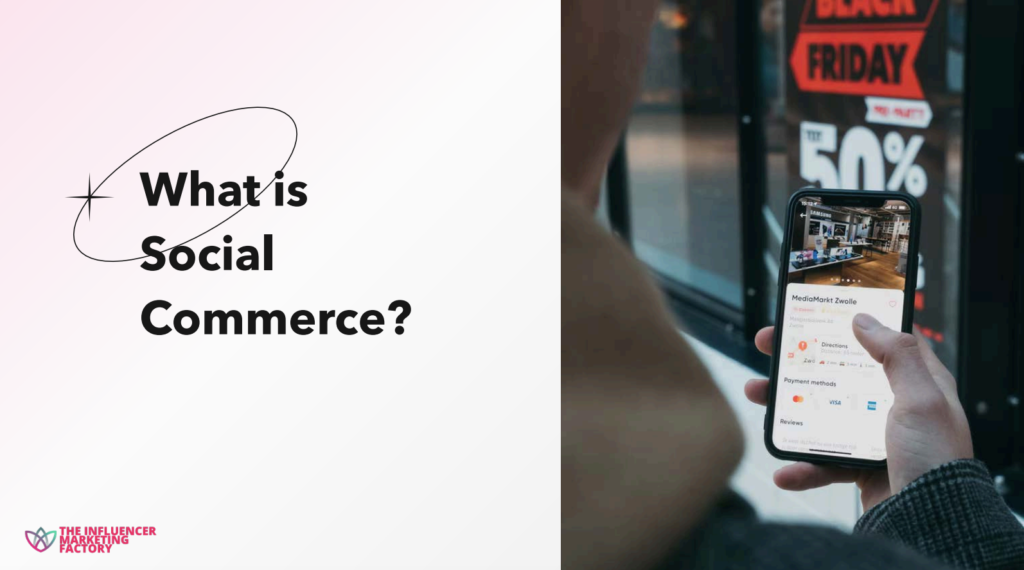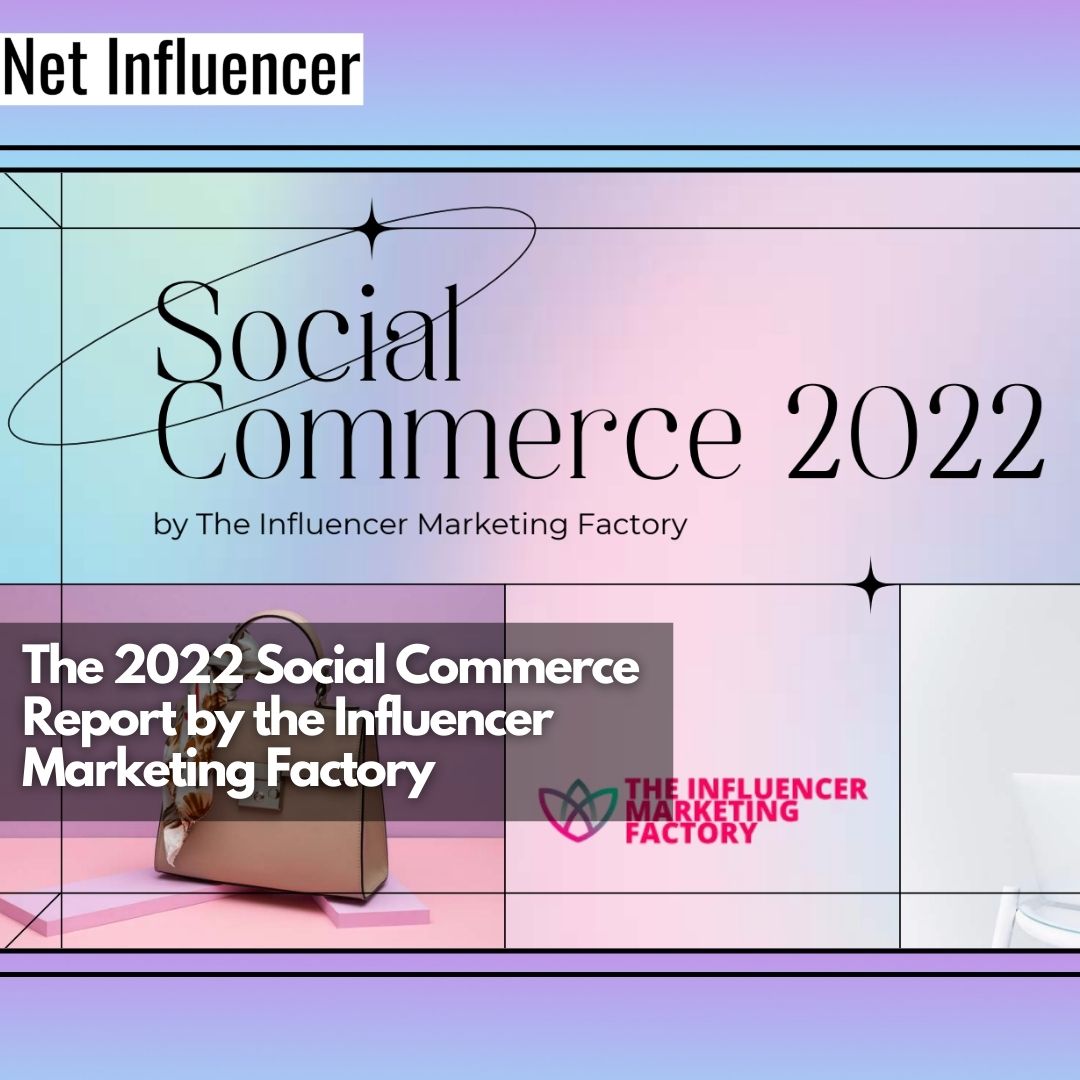Strategy
What You NEED to Know about the 2022 Social Commerce Report by the Influencer Marketing Factory
Interested in standing out against your competition? The 2022 Social Commerce Report shares in-depth information about online shopping behaviors, trends, and how businesses can boost their earnings and online presence. Keep reading for everything you NEED to know about the 2022 Social Commerce Report.
What is Social commerce?
Social commerce is a term coined to define the selling and buying process of products directly on social media platforms. Social commerce includes every part of the buying and selling process, from product discovery, checkout, product research and reviews, and the purchase.

Many social media platforms now feature “buy now” buttons or include autofill payment options to reduce the friction and time needed for consumers to purchase through a social media platform. Currently, China has one of the most advanced social commerce industries worldwide.

Today, we’re discussing the results and findings of the 2022 Social Commerce Report by the Influencer Marketing Factory so that you can walk away understanding how and why social commerce can boost your business and earnings.
Who Conducted the Survey?
The Influencer Marketing Factory conducted the 2022 Social Commerce Report survey. They are a global influencer marketing agency that has been featured on Forbes and Inc. and named one of the “Top Influencer Marketing Companies 2021” by Business of Apps. Their clients have included Amazon, Google, Sony Music, Universal, and Dunkin’.
Survey Methodology
The 2022 Social Commerce Report survey contains data from over 1,000 U.S. users who answered the survey questions between December 9th and December 14th, 2021. The target audience for this survey was individuals between the ages of 16 and 54, with a heavy emphasis on Millennials and Gen Z.
According to the Influencer Marketing Factory, the survey’s goal was to learn more about user preferences for social commerce usage, live stream shopping, how individuals shop online, and their general shopping habits and preferences.
- Influencers Drive Social Commerce
Unsurprisingly, this survey found that influencers were a significant driver behind social commerce sales. From additional research collected, the Influencer Marketing Factory reports that 90% of individuals believe that influencer marketing is an effective marketing tool. 72% report that they think the quality of customers driven by influencer marketing campaigns is better when compared to other types of marketing.
The survey reports that 82% of survey respondents had found a product through social media and purchased it on their phones. 41% also reported that they strongly agree that they like taking advantage of discounts provided by influencers.
Influencers were noted as one of the best ways to boost your business because influencer content on social media platforms is naturally pushed to individuals interested in the categories they feature in their content with the algorithm. Thanks to social media algorithms, influencers are primed and ready to capture your target audience’s attention.
If you are an influencer, remember that you should not underestimate your value to a brand. You are a direct link to a brand’s target audience and should be paid accordingly.
- Social Commerce is Essential to Brand Success
Currently, China is leading the way in social commerce. With worldwide social commerce numbers being estimated at $475 billion U.S. dollars in 2020. This number is expected to have a compound annual growth rate of 28.4% from now to 2028.
If those numbers alone don’t convince you, consider other reasons why social commerce can help your business. Brands should consider using social commerce for many reasons: increasing their revenue, reducing the risk of abandoned online carts, removing friction between the buyer and checkout, and building a stronger relationship with their customers.
Social commerce also opens the door for new and exciting opportunities like augmented reality, personalized shopping experiences, and custom discounts.
The survey found that social commerce will only continue to grow, with 40% of survey participants already stating that they preferred online shopping and 47% of respondents saying they liked both in-store and online shopping.
This trend will only continue as younger generations come into money. Only 13% of 18 to 24 old-year-old participants and 8% of participants under 18 reported preferring in-store shopping.
The survey also found that participants found brand accounts the most useful for helping them make a purchase decision through social media. Influencer/content creators were the second most popular response.
Ashley Crowder, the Founder and CEO of VNTANA, shared that 45% of consumers research products on social media before finalizing their purchase decision. 20% to 30% of consumers discover new products on social media, making social commerce a significant part of growing your brand in today’s world.
Another key takeaway from this survey is that 29% of participants said they shopped on social media at least once a week. 24% said they shopped on social media more than once a week. Only 5% said they never shop online, but they will soon.
- Personalized Shopping Experiences Drive Sales
A key focus of the 2022 Social Commerce Report was exploring personalized shopping experiences, particularly live streaming.
57% of the survey respondents admitted that they had purchased something during a live stream shopping event, such as Instagram Live or Amazon Live. Interestingly, participants who were 25 to 34 years old and 35 to 44 years old reported the highest number of live stream shoppers. While individuals under the age of 25 reported much fewer live stream shoppers.
So, depending on your demographic, you may want to consider live stream shopping events if you are trying to increase your sales in individuals who are 25 to 44 years old.
18 to 24 years old have a 40:60 split, with 40% saying that they had purchased during a live event, so this may still be something to consider if they are your target audience. However, if you’re marketing to Gen Z, live stream shopping events are probably not your best approach.
Chloe Cox, the Social Strategy and Insight Consultant at Wunderman Thompson Commerce, summed personalized shopping experiences up like this, “Social platforms need to provide a rich and engaging experience to entice the audience to shop in the first place.”
For your business, this may look like live streams, augmented reality, personalized shopping experiences, or the ability to share products easily with friends and family so that you can consult with them before finalizing a purchase. Regardless of the method, take a look at your target audience and decide how you can engage them like never before.
Final Thoughts
Social commerce is the future of shopping. Don’t be a passive bystander to social commerce. Take advantage of it now, as many platforms roll out new and exciting social commerce features. More than ever before, shoppers are looking for interactive, authentic, and engaging shopping experiences with brands that they trust.





















